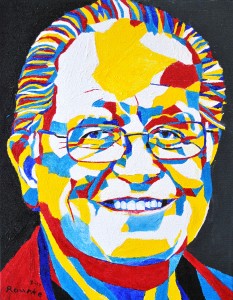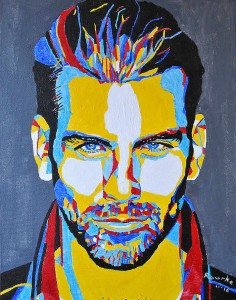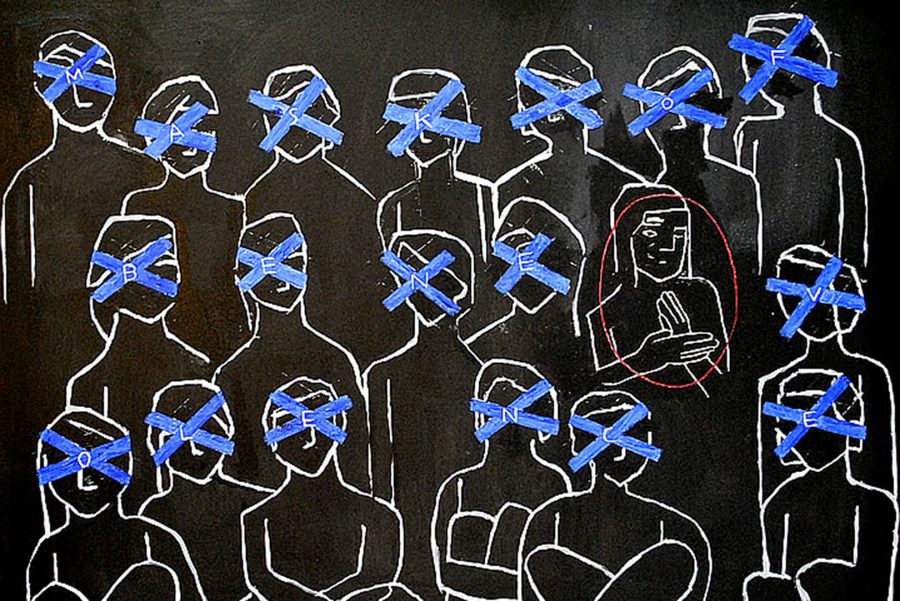When Nancy Rourke was still very young, her parents and doctors thought she had a learning disability. When she tried to speak, they believed she had a speech impairment.
In fact, Rourke was born deaf, but had been misdiagnosed for the first six years of her life. Her story isn’t entirely uncommon in the deaf community, so she has been sharing her journey through drawing and painting ever since.
Rourke has her Master of Fine Arts in computer graphics and painting from The National Technical Institute of the Deaf and Rochester Institute of Technology in New York.
In 1988, Rourke started creating color palettes that colorized black and white films for 20th Century Fox and became a palette designer. She has worked on films such as “Sherlock Holmes” and “King Kong.”
A year later, she moved to Seattle and was a graphic designer for Microsoft Corporation where she designed some Windows icons.
After being laid off from Microsoft, Rourke went back to painting after a 16-year break and won second place at the Northern Colorado Regional Juried Show. She began painting landscapes, cityscapes and portraits.
In 2010, Rourke joined the De’VIA, or Deaf View/Image on Art, movement.
“It’s just about the deaf perspective and putting their art onto display,” Rourke said. “It’s an expression of the deaf experience itself and putting that in the art form.”
The whole experience is about the culture of the art and the artist, their identity, acceptance of Deafhood (a word used in Dr. Paddy Ladd’s book, Understanding Deaf Culture, In Search of Deafhood), and their deaf history.
The De’VIA movement helps people better understand each individual’s experience, how they identify, where they are from, and shows empowerment.
“The manifesto for De’VIA says that people who are not deaf can create De’VIA artwork. There’s no rule against it, we welcome anyone to create De’VIA art,” Rourke said. “There’s no limitation at all. And secondly, it comes from the heart, it comes from a good place.”
In Rourke’s paintings, each color and symbol represents something different. Black and gray are seen as negative, whereas black, gray and white can help provide a contrast between different colors.

The color white seen in Rourke’s artwork is a sign of neutral feelings she might have.
Blue has two different tones, light blue is extremely positive and happiness on the Deafhood journey; and darker blues refers to The Mask of Benevolence (a book that talks about the mistreatment the deaf community receives).
Red refers to power, love and positive emotions; and yellow stands for hope of the future and improvement in life.
Blue tape is often a symbol of being trapped, tied down, or ASL-prohibited; and a yellow horse can symbolize deaf people.
All of Rourke’s colors and symbolization are very eye catching and powerful.

De’VIA has kept its same manifesto since they formed in 1989, but they have slowly begun focusing on artivism, which is a form of activism through art. Rourke and other members of De’VIA have joined many different communities in protests and parades. They also go to deaf schools and visit deaf individuals in prison and help them express themselves through art as well.
“I help fight for their rights because often they don’t have access to video, phones or interpreters while they’re in prison, so I help them express themselves through their artwork,” Rourke said.
The word “artivism” can describe a De’VIA artist (or any artist) who chooses to expresses their activism through art. An artist that becomes an artivist creates strong and powerful artwork that impacts the community.
“I’m really involved in all the different protests. When I see something that’s not right, like the interactions that happen in hospitals, or the lack of options they might have. I also fight for the rights of deaf children and help them go to deaf schools, and being involved with getting ASL into people’s lives,” Rourke said.



